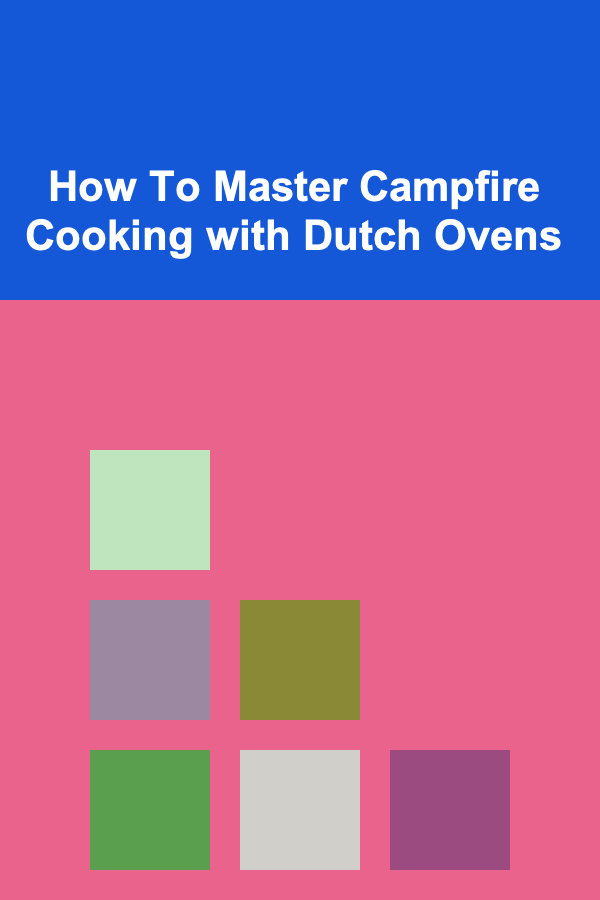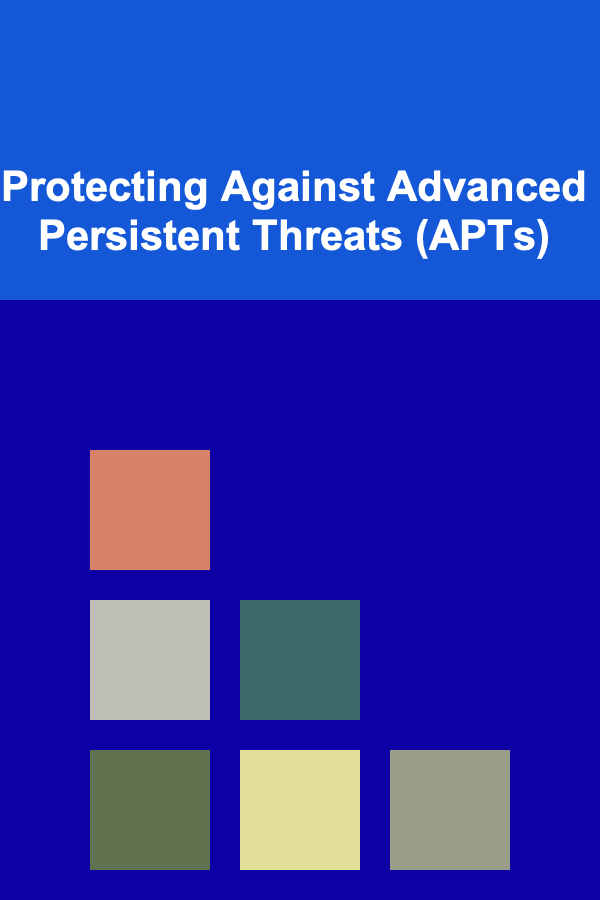
How To Master Campfire Cooking with Dutch Ovens
ebook include PDF & Audio bundle (Micro Guide)
$12.99$11.99
Limited Time Offer! Order within the next:

Campfire cooking offers a unique experience that connects us to nature while honing our culinary skills in a setting far removed from modern kitchens. One of the most versatile tools for campfire cooking is the Dutch oven. Known for its durability, heat retention, and even cooking ability, a Dutch oven is the quintessential piece of cookware for outdoor cooking. Whether you're making a simple stew, baking bread, or preparing a decadent dessert, mastering campfire cooking with a Dutch oven can transform your camping experience.
This guide will take you through the essentials of Dutch oven cooking over a campfire, providing you with the knowledge to create mouthwatering meals while embracing the wilderness.
The Basics of Dutch Oven Cooking
What is a Dutch Oven?
A Dutch oven is a heavy, cast-iron pot with a tight-fitting lid, often coated with enamel or left bare. Historically, it was used over open fires, but its modern use extends to various heat sources like stovetops and ovens. The Dutch oven is particularly valued for its ability to retain and distribute heat evenly, making it ideal for slow-cooking, baking, frying, and braising.
When used over a campfire, the Dutch oven becomes a versatile cooking tool that can withstand high temperatures and long cooking times. The thick walls of the pot help maintain consistent heat, while the lid traps moisture, which prevents dishes from drying out and helps tenderize meats and vegetables.
Why Use a Dutch Oven for Campfire Cooking?
The Dutch oven's design is tailored for outdoor cooking. When placed on a campfire, it offers several advantages:
- Heat Retention: The cast-iron material ensures that heat is evenly distributed and retained, allowing for steady cooking without the risk of burning food.
- Versatility: From roasting meats to baking bread, the Dutch oven can handle a wide range of cooking methods. It's perfect for stews, soups, casseroles, and even desserts like cobblers and cakes.
- Durability: Made from heavy-duty cast iron, Dutch ovens can withstand direct contact with the fire, ensuring long-lasting performance. Whether you're camping in the wilderness or cooking in your backyard, it can take a beating.
- Ease of Use: Cooking with a Dutch oven requires minimal skills but offers a high level of reward. With the right techniques, you can produce meals that are both delicious and fulfilling.
Choosing the Right Dutch Oven for Campfire Cooking
Before you can start cooking, you'll need to choose the right Dutch oven. Not all Dutch ovens are created equal, and the best choice depends on your camping needs, cooking style, and preferences.
Material: Bare vs. Enameled
- Bare Cast Iron: These Dutch ovens are uncoated and require seasoning. They develop a natural non-stick surface over time and can withstand higher temperatures. However, they are more prone to rust if not cared for properly.
- Enameled Cast Iron: Enameled Dutch ovens have a porcelain coating that prevents rust and eliminates the need for seasoning. They are easier to clean but may not handle high temperatures as well as their bare counterparts.
For campfire cooking, bare cast iron is often preferred due to its heat tolerance and the fact that it can be used directly in the fire. However, if you're looking for ease of maintenance, enameled versions are a good option.
Size
Dutch ovens come in various sizes, typically measured in quarts. The right size for you depends on the number of people you're cooking for and the types of meals you plan to prepare.
- Small (3-5 quarts): Suitable for small groups or cooking individual meals like soups or stews.
- Medium (6-8 quarts): Ideal for medium groups or for preparing dishes like casseroles or roast chicken.
- Large (10+ quarts): Best for large groups or when preparing multiple dishes at once.
A 6-8 quart Dutch oven is often the most versatile for most camping situations.
Lid Design
A Dutch oven lid plays a crucial role in campfire cooking. Some lids are flat, while others have a slight dome. The dome shape is particularly beneficial when baking bread or cakes, as it allows for better heat circulation. Many Dutch ovens designed for campfire cooking also feature a lip around the edge of the lid, which allows you to place hot coals on top for more even heat distribution.
Setting Up Your Campfire for Dutch Oven Cooking
The next step in mastering campfire cooking with a Dutch oven is learning how to set up the campfire correctly. Proper fire management is essential for achieving the right cooking temperature and maintaining consistency.
Fire Preparation
- Build a Solid Base: Start by building a fire with dry wood to create a solid base of hot embers. A wood fire with a bed of hot coals works best for Dutch oven cooking.
- Let the Fire Burn Down: Once your fire is burning strong, let it burn down until you have a good amount of hot coals. This will provide steady, even heat.
- Use a Two-Zone Fire Setup: The two-zone method involves placing the firewood on one side to create a pile of embers, while leaving the other side clear for cooking. This setup allows for control over the heat, as you can move the Dutch oven closer to the embers for higher heat or further away for lower heat.
Temperature Control
Controlling temperature when cooking over a campfire can be tricky. The key is to use a combination of direct and indirect heat. Here are some tips for managing temperature with your Dutch oven:
- Coals Underneath: Place a layer of coals beneath the Dutch oven to provide heat from below. This is ideal for roasting, frying, and simmering dishes.
- Coals on Top: Placing coals on top of the Dutch oven lid creates heat from above, which is essential for baking bread, cakes, or casseroles. For more even heat distribution, you can place more coals on the lid than underneath the pot.
- Adjusting Temperature: To maintain consistent cooking temperatures, adjust the number of coals. Each coal provides approximately 10-15 degrees of heat, so you can increase or decrease the heat by adding or removing coals.
Timing
Cooking over a campfire requires patience. Dutch oven dishes often benefit from slow cooking, which allows flavors to meld and ingredients to tenderize. Here's a general guideline for cooking times:
- Stews and soups: 1-2 hours
- Roasts and meats: 2-4 hours
- Baked goods (bread, cakes): 30-60 minutes
Remember, campfire cooking is about flexibility, and times may vary depending on the heat of the fire and the size of the dish.
Mastering Campfire Cooking with Dutch Ovens
Step-by-Step Recipes
Now that you've set up your Dutch oven and fire, it's time to start cooking. Below are some tried-and-true recipes that showcase the versatility of Dutch oven campfire cooking.
1. Classic Campfire Chili
Ingredients:
- 1 lb ground beef
- 1 can diced tomatoes
- 1 can kidney beans
- 1 can chili beans
- 1 onion, chopped
- 2 cloves garlic, minced
- 2 tbsp chili powder
- 1 tsp cumin
- Salt and pepper to taste
Instructions:
- Brown the ground beef in the Dutch oven over medium heat. Add the onions and garlic, cooking until softened.
- Add the tomatoes, beans, and spices. Stir to combine.
- Cover the Dutch oven with the lid and cook for 1-2 hours over a low to medium heat, stirring occasionally. Adjust seasoning as needed.
- Serve with cornbread or tortilla chips.
2. Campfire Dutch Oven Pot Roast
Ingredients:
- 3-4 lb beef roast
- 4 large potatoes, quartered
- 3 carrots, chopped
- 1 onion, quartered
- 2 cups beef broth
- 2 tbsp olive oil
- 2 tbsp rosemary
Instructions:
- Heat the Dutch oven with olive oil over medium heat. Brown the roast on all sides.
- Add the vegetables and beef broth to the pot, then season with rosemary, salt, and pepper.
- Cover and cook for 2-4 hours, depending on the heat of the fire, until the meat is tender and the vegetables are cooked through.
- Serve hot with a side of bread.
3. Campfire Dutch Oven Peach Cobbler
Ingredients:
- 2 cups canned peaches (or fresh)
- 1 cup self-rising flour
- 1 cup sugar
- 1 cup milk
- 1/2 cup butter, melted
- 1 tsp vanilla extract
Instructions:
- Preheat the Dutch oven with a layer of coals underneath.
- In a bowl, mix the flour, sugar, and milk to create a batter.
- Pour the peaches and juice into the bottom of the Dutch oven. Pour the batter over the top of the peaches.
- Drizzle the melted butter and vanilla over the batter.
- Cover and bake for 30-45 minutes, until the top is golden brown and the edges are crispy.
- Serve with whipped cream or ice cream.
Cleaning and Maintaining Your Dutch Oven
After the meal, it's essential to clean and maintain your Dutch oven to ensure it lasts for years. Here's how to do it:
- Let It Cool: Before cleaning, allow the Dutch oven to cool down, but don't let it sit in cold water while hot to avoid cracking.
- Scrape Off Food: Use a spatula or scraper to remove any food remnants.
- Clean with Water: Use warm water and a non-abrasive sponge to clean the pot. Avoid using soap, as it can strip the seasoning.
- Dry and Oil: Once cleaned, dry the Dutch oven thoroughly and apply a thin layer of vegetable oil to prevent rusting.
Conclusion
Mastering campfire cooking with a Dutch oven is an invaluable skill for outdoor enthusiasts. The Dutch oven's versatility, durability, and even heat distribution make it an excellent choice for preparing meals over a campfire. Whether you're roasting, simmering, baking, or frying, a Dutch oven allows you to create delicious meals that enhance the camping experience. By mastering the techniques outlined in this guide, you'll be able to cook like a pro, impressing friends and family with your outdoor culinary skills.

How to Soundproof Your Attic for More Comfort
Read More
How to Cook Healthy Grains and Legumes
Read More
How To Build Drones for Photography and Videography (Robotics Focus)
Read More
Understanding Gen Z on Social Media: A Deep Dive
Read More
Protecting Against Advanced Persistent Threats (APTs)
Read More
How to Transition to a Digital Insect Care Checklist
Read MoreOther Products

How to Soundproof Your Attic for More Comfort
Read More
How to Cook Healthy Grains and Legumes
Read More
How To Build Drones for Photography and Videography (Robotics Focus)
Read More
Understanding Gen Z on Social Media: A Deep Dive
Read More
Protecting Against Advanced Persistent Threats (APTs)
Read More